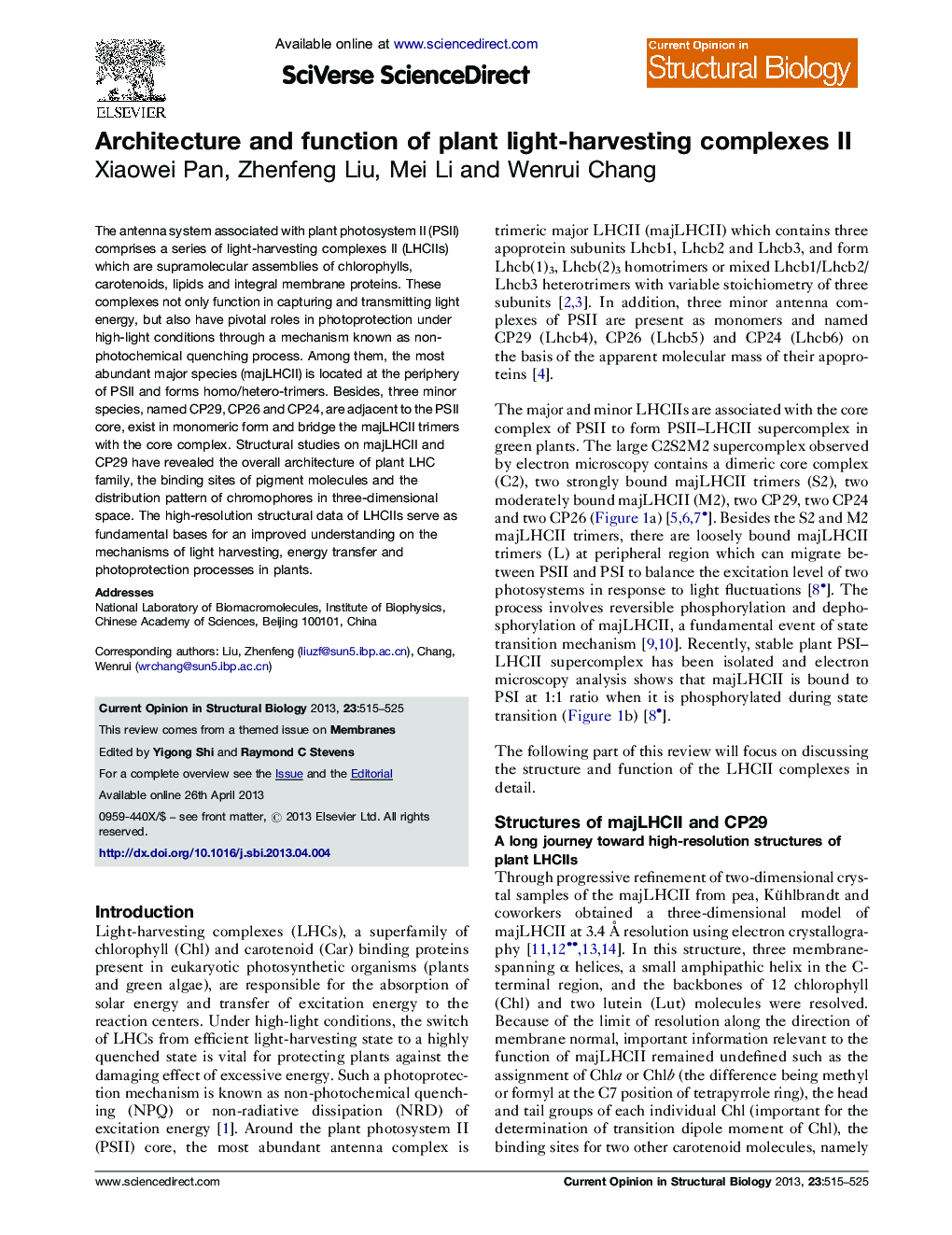| Article ID | Journal | Published Year | Pages | File Type |
|---|---|---|---|---|
| 1979302 | Current Opinion in Structural Biology | 2013 | 11 Pages |
Abstract
The antenna system associated with plant photosystem II (PSII) comprises a series of light-harvesting complexes II (LHCIIs) which are supramolecular assemblies of chlorophylls, carotenoids, lipids and integral membrane proteins. These complexes not only function in capturing and transmitting light energy, but also have pivotal roles in photoprotection under high-light conditions through a mechanism known as non-photochemical quenching process. Among them, the most abundant major species (majLHCII) is located at the periphery of PSII and forms homo/hetero-trimers. Besides, three minor species, named CP29, CP26 and CP24, are adjacent to the PSII core, exist in monomeric form and bridge the majLHCII trimers with the core complex. Structural studies on majLHCII and CP29 have revealed the overall architecture of plant LHC family, the binding sites of pigment molecules and the distribution pattern of chromophores in three-dimensional space. The high-resolution structural data of LHCIIs serve as fundamental bases for an improved understanding on the mechanisms of light harvesting, energy transfer and photoprotection processes in plants.
Related Topics
Life Sciences
Biochemistry, Genetics and Molecular Biology
Biochemistry
Authors
Xiaowei Pan, Zhenfeng Liu, Mei Li, Wenrui Chang,
